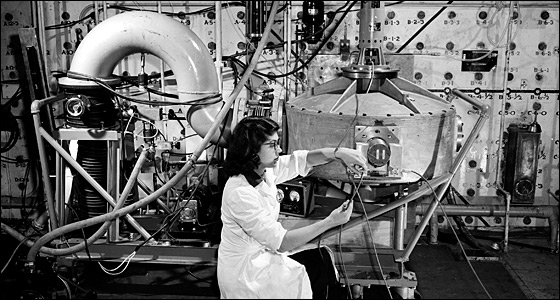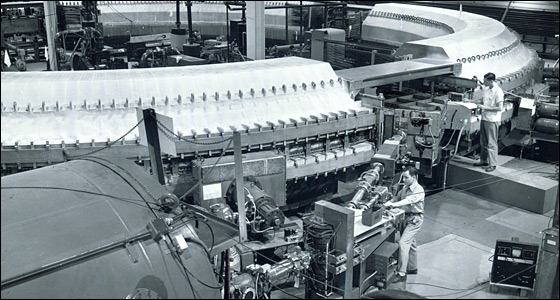BNL Timeline
APS Historic Site Home > BNL Timeline > 1947-1957
1947-1957

Working inside the Brookhaven Graphite Research Reactor, the first peacetime reactor constructed in the United States
The first decade of Brookhaven’s history sees the opening of two unique facilities for physics research, the Brookhaven Graphite Research Reactor (BGRR) – the first peacetime reactor constructed in the United States, where researchers developed the most widely used radioisotope for diagnosing diseased organs (technetium-99m) – and the Cosmotron, the highest-energy accelerator of the time.

The Cosmotron, which sent protons to previously unheard of energies
The Cosmotron sends protons to previously unheard of energies (the billion electron volts, or GeV, region) and led to a number of immediate findings, including the discovery of the long-lived neutral kaon, and evidence that the fundamental and supposedly absolute law of parity conservation had been violated (research that led to the 1957 Nobel Prize in Physics). But as the record-breaking machine started up, Brookhaven physicists were already figuring out how to push the energy frontier even higher.
In order to produce a cost-effective accelerator with 10 times more power, Brookhaven physicists calculates that reversing the direction of the Cosmotron’s “C”-shaped magnets results in a much more tightly focused proton beam. The strong-focusing principle was born. The discovery meant that more powerful machines could be built with smaller magnets and less cash. It now serves as the basis for most of the world’s accelerators.